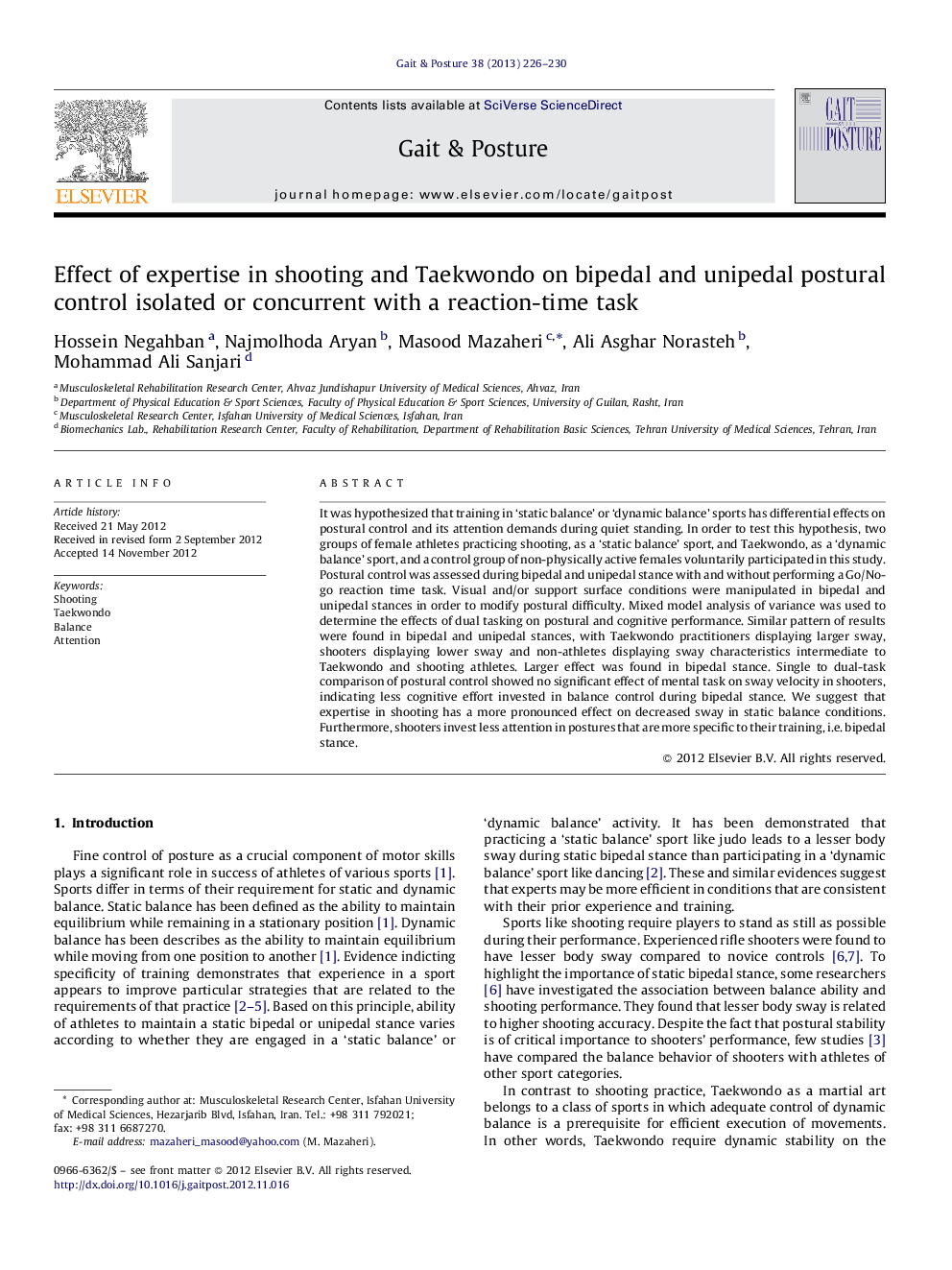| کد مقاله | کد نشریه | سال انتشار | مقاله انگلیسی | نسخه تمام متن |
|---|---|---|---|---|
| 6207327 | 1265658 | 2013 | 5 صفحه PDF | دانلود رایگان |
It was hypothesized that training in 'static balance' or 'dynamic balance' sports has differential effects on postural control and its attention demands during quiet standing. In order to test this hypothesis, two groups of female athletes practicing shooting, as a 'static balance' sport, and Taekwondo, as a 'dynamic balance' sport, and a control group of non-physically active females voluntarily participated in this study. Postural control was assessed during bipedal and unipedal stance with and without performing a Go/No-go reaction time task. Visual and/or support surface conditions were manipulated in bipedal and unipedal stances in order to modify postural difficulty. Mixed model analysis of variance was used to determine the effects of dual tasking on postural and cognitive performance. Similar pattern of results were found in bipedal and unipedal stances, with Taekwondo practitioners displaying larger sway, shooters displaying lower sway and non-athletes displaying sway characteristics intermediate to Taekwondo and shooting athletes. Larger effect was found in bipedal stance. Single to dual-task comparison of postural control showed no significant effect of mental task on sway velocity in shooters, indicating less cognitive effort invested in balance control during bipedal stance. We suggest that expertise in shooting has a more pronounced effect on decreased sway in static balance conditions. Furthermore, shooters invest less attention in postures that are more specific to their training, i.e. bipedal stance.
⺠Body sway was compared between shooters, Taekwondokas and non-athletes. ⺠Bipedal and unipedal stances were assessed with and without doing a reaction time task. ⺠Shooters displayed less postural sway during quiet stance compared to other groups. ⺠Dual tasking had no significant effect on body sway in shooters. ⺠The specific balance requirements of a sport may have an influence on body sway.
Journal: Gait & Posture - Volume 38, Issue 2, June 2013, Pages 226-230
